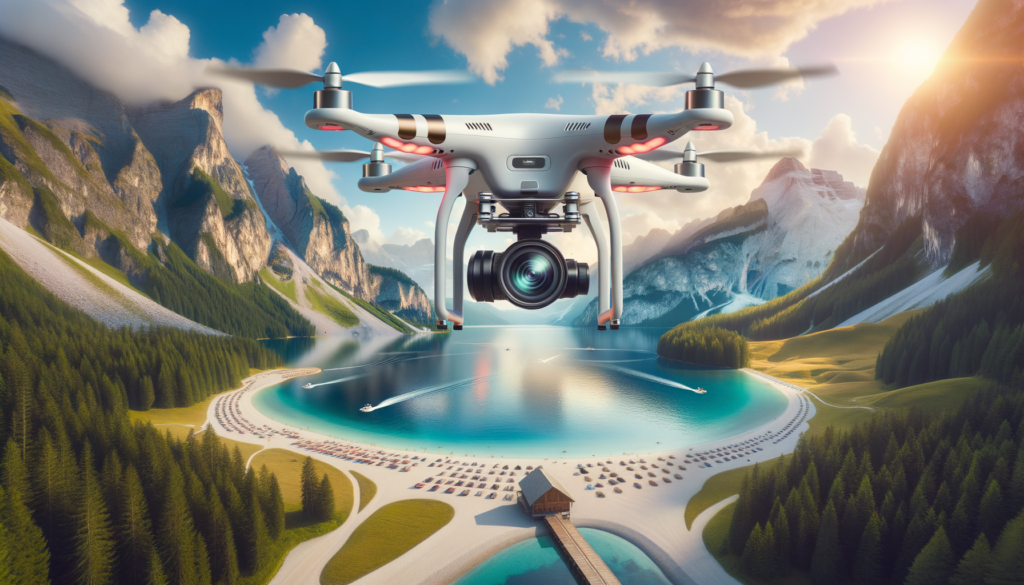The DIY & Crafts Blog

Drone Photography and Videography: Elevate Your Visual Storytelling
The Rise of Drone Photography and Videography
Drone technology has revolutionized the way we capture the world around us. From breathtaking aerial shots to dynamic video sequences, drones offer a perspective that was once limited to helicopters and airplanes. This accessibility has democratized aerial photography and videography, allowing enthusiasts and professionals alike to explore new creative horizons.
The rise of drone photography and videography can be attributed to several factors. Firstly, the advancements in drone technology have made these devices more user-friendly and affordable. This has opened up opportunities for photographers and videographers to experiment with aerial shots without the need for expensive equipment or extensive training. Secondly, the demand for high-quality visual content has skyrocketed across various industries, from real estate to tourism, driving the need for innovative ways to capture and present images and videos.
Moreover, drones have become indispensable tools in fields such as journalism and filmmaking, where they provide unique viewpoints that enhance storytelling. By offering a bird’s-eye view, drones can capture expansive landscapes, intricate cityscapes, and even follow dynamic action sequences, adding depth and engagement to visual narratives.
Technical Aspects of Drone Photography
Understanding the technical aspects of drone photography is essential for achieving stunning results. One of the key considerations is the camera quality. Most drones come equipped with high-resolution cameras capable of capturing sharp images and smooth videos. However, factors such as sensor size, lens quality, and stabilization technology play a crucial role in determining the overall output.
Another important aspect is the drone’s flight capabilities. Drones with advanced GPS systems and obstacle avoidance features provide greater control and safety, allowing photographers to focus on composition and creativity. Additionally, the ability to shoot in different modes, such as panorama or HDR, can enhance the visual appeal of the images captured.
Lighting conditions also significantly impact drone photography. The golden hours, shortly after sunrise and before sunset, are ideal for capturing dramatic lighting and long shadows. Understanding how to adjust exposure settings and use filters can help in managing challenging lighting scenarios, such as harsh midday sun or low-light conditions.
Applications of Drone Videography
Drone videography has found applications across a wide range of industries, each leveraging the unique capabilities of drones to enhance their visual content. In the real estate sector, drones are used to create captivating property tours, showcasing homes and landscapes from an aerial perspective. This not only attracts potential buyers but also provides a comprehensive view of the property and its surroundings.
In tourism, drones capture the essence of travel destinations, offering potential visitors a glimpse of what awaits. From stunning coastline flyovers to immersive city tours, drone footage can evoke a sense of wanderlust and adventure. Similarly, in the event industry, drones are used to document weddings, concerts, and sports events, capturing moments from angles that were previously unattainable.
Furthermore, drones play a significant role in environmental and wildlife conservation efforts. By providing aerial surveys and monitoring, drones help researchers gather data on ecosystems, track wildlife movements, and assess environmental changes. This application not only aids in conservation efforts but also raises awareness about the importance of protecting our natural world.
Challenges and Considerations in Drone Usage
While drone photography and videography offer numerous advantages, they also come with challenges and considerations that users must be aware of. One of the primary concerns is the regulatory environment. Different countries have varying laws and regulations regarding drone usage, including restrictions on where and how high drones can fly. It is crucial for drone operators to familiarize themselves with these regulations to ensure compliance and avoid legal issues.
Another challenge is mastering the technical skills required to operate drones effectively. While many drones are equipped with intuitive controls, achieving smooth and professional-looking footage requires practice and experience. Understanding flight dynamics, camera settings, and post-processing techniques are essential for producing high-quality content.
Moreover, safety is a critical consideration when flying drones. Operators must be vigilant about potential hazards, such as power lines, trees, and other obstacles. Ensuring that the drone is in good working condition and regularly maintained is vital for safe operations. Additionally, being respectful of privacy and avoiding areas where drone flights may cause disturbances is important for responsible drone usage.
Future Trends in Drone Photography and Videography
The future of drone photography and videography looks promising, with continuous advancements in technology and applications. One of the emerging trends is the integration of artificial intelligence and machine learning into drones. This enables features such as automated flight paths, real-time object tracking, and enhanced image processing, further simplifying the creative process for users.
Another exciting development is the miniaturization of drone technology. Smaller, more portable drones are becoming increasingly popular, allowing for easier transport and deployment in various environments. This trend is particularly beneficial for travelers and outdoor enthusiasts who wish to capture their adventures from unique perspectives.
Furthermore, the potential for drones in live streaming and virtual reality is expanding. Drones equipped with 360-degree cameras can provide immersive experiences, transporting viewers to remote locations and events in real-time. As technology continues to evolve, the possibilities for drone photography and videography are boundless, offering new and innovative ways to tell visual stories.









